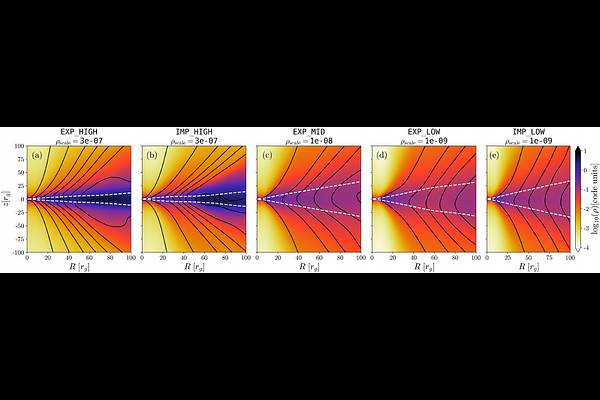Black hole spectral states revealed in GRMHD simulations with texture memory accelerated cooling

Black hole spectral states revealed in GRMHD simulations with texture memory accelerated cooling
Pedro Naethe Motta, Jonatan Jacquemin-Ide, Rodrigo Nemmen, Matthew T. P. Liska, Alexander Tchekhovskoy
AbstractX-ray binaries (XRBs) display spectral state transitions that are accompanied by substantial changes in the hardness, luminosity, and structure of the accretion flow. We developed a GPU-accelerated cooling toolkit for general relativistic magnetohydrodynamic (GRMHD) simulations of accreting black holes that uses texture memory for fast retrieval of pre-computed values. The toolkit incorporates bremsstrahlung, synchrotron, inverse Compton radiation and Coulomb collision processes. We implemented our toolkit into a GRMHD code and used it to simulate a magnetically arrested disk in the context of the XRB low/hard state around a Kerr black hole. We explored the mass accretion rate in the $\sim (10^{-6}-0.3) \dot{M}_{\rm Edd}$ range, where $\dot{M}_{\rm Edd}$ is the Eddington accretion rate. Our simulations reveal that for low accretion rates ($\dot{M} \lesssim 0.01 \dot{M}_{\rm Edd}$), the flow settles into a geometrically thick, low-density, two-temperature hot accretion flow. At higher accretion rates, the flow turns into a cold single-temperature thin disk at $r_{\rm in} \gtrsim 50 r_g$. Inside, the disk breaks up into single-temperature thin filaments embedded into a two-temperature hot thick flow. Our GPU texture memory accelerated cooling prescription is $3-5$ times faster than the standard radiation M1 closure methods, and $\sim5$ times faster than storing the lookup table in global memory.